
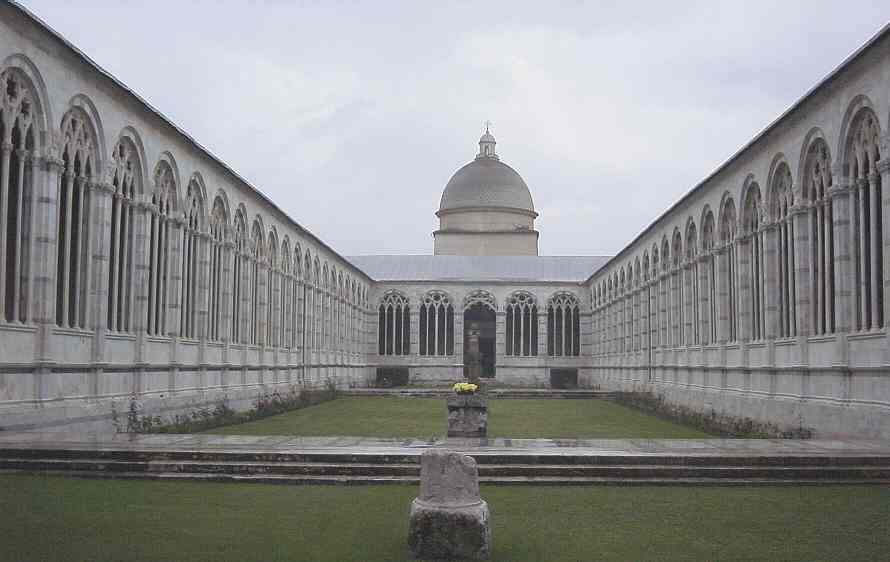
Everyone knows about the leaning tower but not everyone knows about the Camposanto, the burial grounds of the Cathedral square and a real survivor in its own right. In the aerial view below, it's the large rectangular cloister on the left with the new roof.
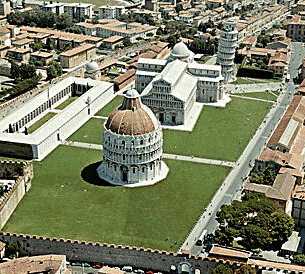
The site below has a good Quicktime video that shows the full cloister: http://www.webcomp.com/virtuale/it/pisa/camposanto.htm
Begun in 1278 (with the typical two centuries to complete), the building surrounds a courtyard filled, legend has it, with many Pisan shiploads of dirt taken from Golgatha in the Holy Land during a 13th century Crusade. Supposedly this earth can reduce bodies to skeletons in a few days.
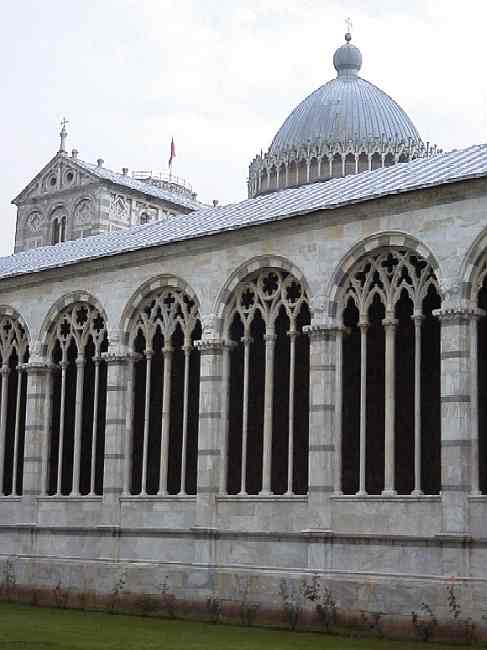
Originally the cloister had an open roof that was enclosed in the 15th century with the northern Gothic four-bay windows. The interior is more marble-striped Pisan Gothic:
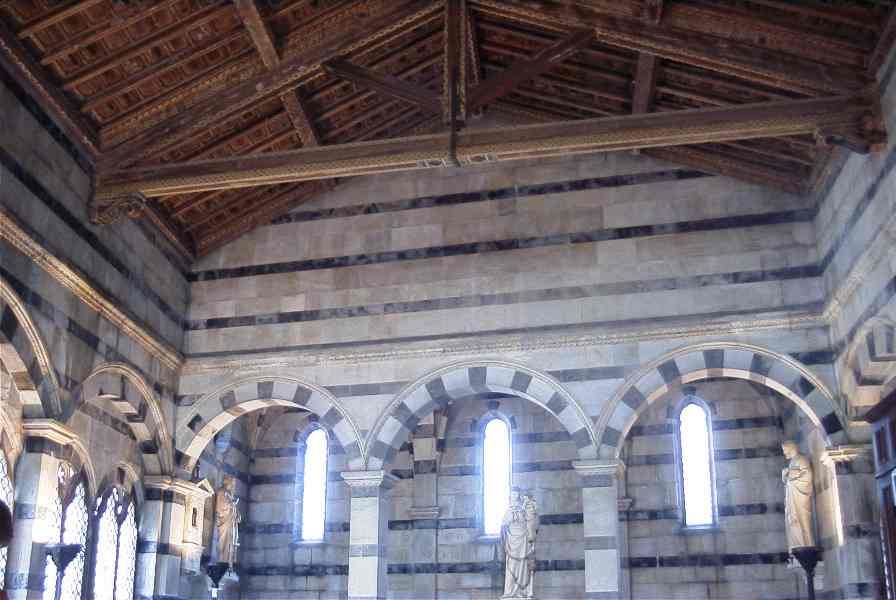
These long cloisters now house a variety of frescoed rooms, chapels, sarcophagi, and other items that cities store in the attics they call museums. We entered through the West side which showed off large chains once used to close off Pisa's harbor.
The north wall is very long and nearly empty except for sarcophagi lining its walls. Many frescoed rooms lead from it. Unfortunately the roof burnt down in 1944 when the Americans (inventors of precision bombing) tried to root out the Germans. Many priceless frescoes perished in the fire. (Not all has been lost -- when the burnt plaster was taken down, the artists original red ochre sketch outlines, called Sinopie, were exposed and are now in another museum on the Cathedral square.) In addition, some rooms have been reconfigured with photos of the frescoes.
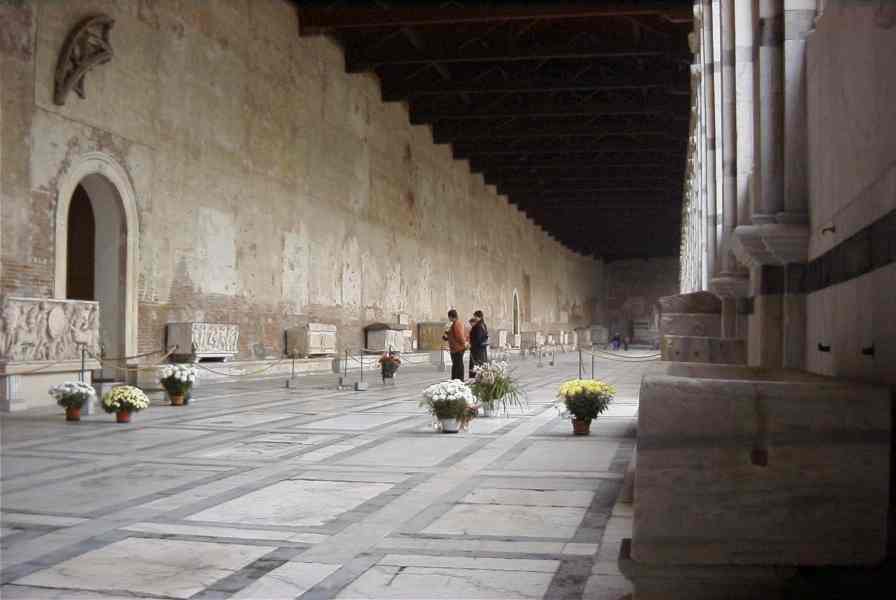
Some frescoes miraculously survived such as the famous "Triumph of Death," probably painted about the time of the plague.
After visiting the Camposanto, we toured the Duomo museum, a former convent with great views of the tower. Like most such museums, it contains the weathered statues that sat outside on the cathedral buildings for centuries. Their spots are now filled with copies. What I liked most about this place was the excellent wooden models of the tower, baptistery, etc. If you want to see more, try this Quicktime site:
After lunch, we walked South through the University town of Pisa and across the Arno. Please join us by clicking here:
Where do you want to go today? Here's a few choices:
